What is Conversational AI?
Conversational AI is a form of artificial intelligence that enables consumers to have real-time conversations that are close to human-to-human interactions. Think virtual assistants, like Amazon’s Alexa and Apple’s Siri, or advanced AI chatbots.
Conversational AI can do a variety of things with very little human intervention, like connecting buyers to sales, answering product questions, or recommending content that a buyer might find helpful. In other words, with Conversational AI, you can deliver an authentic, conversational digital experience.
For example, here’s what a chatbot that uses Conversational AI looks like in action 👇
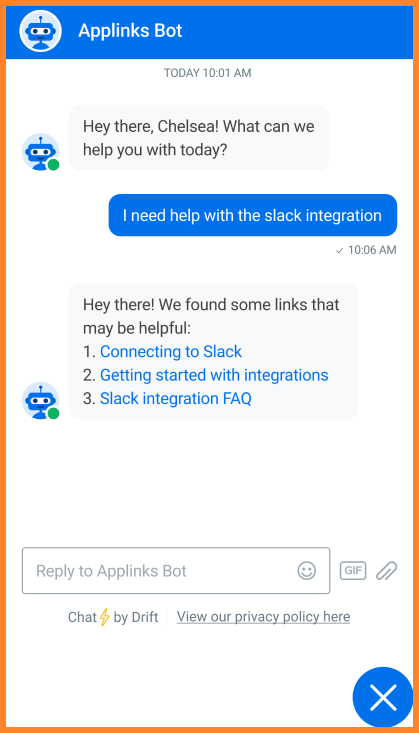
How Conversational AI Works
Conversational AI uses natural language processing (NLP) and machine learning to teach chatbots to understand the way people speak, as well as recognize the context and intent of their words. These technologies work together to create an online experience that is authentic and relatable — which makes customers more likely to engage with you.
But let’s break it down further. Here’s what’s going on behind the scenes with Conversational AI ⬇️
- Whether the user is speaking to a chatbot or virtual assistant, they provide an input that is either written or spoken.
- If the input is spoken, automatic speech recognition (ASR) kicks in to translate that speech into written text. From there, the Conversational AI uses natural language understanding (NLU) to parse out the conversation and understand the context and intent behind the customer’s words.
- After analyzing the text, the Conversational AI goes through a dialog manager to pinpoint the correct response. It then uses natural language generation (NLG) to send the response back to the user in a personal and conversational way.
Since machine learning continuously analyzes and improves on these conversations, over time, the Conversational AI will get better at understanding context and customer needs.
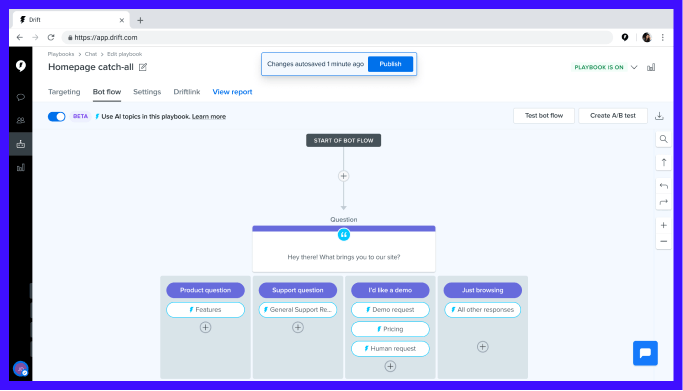
Are Chatbots & Conversational AI the Same?
The short answer is no — chatbots and Conversational AI are not the same.
However, some chatbots leverage Conversational AI to communicate with buyers and customers. The difference is that, while traditional rule-based chatbots need to be pre-programmed with responses using playbooks, AI chatbots are trained to understand the conversational input they receive, which then allows them to operate more or less on their own.
One key differentiator with AI chatbots is, after going through a training period, they enable users to ask questions and express themselves in their own words. The chatbot can also answer those complex queries in a natural, conversational way.
And, as we mentioned before, AI chatbots are constantly learning from their conversations — so, over time, they can automatically adapt their responses to different patterns and new situations, as well as identify and better respond to new topics.
While traditional rule-based chatbots map out conversations and respond to specific keywords based on the site visitor’s inputs, AI chatbots engage, respond, and direct the user to the conversational path they think is best based on existing data.
Check out Drift’s Introduction to AI Chatbots to find out more about what AI chatbots do and how they work.
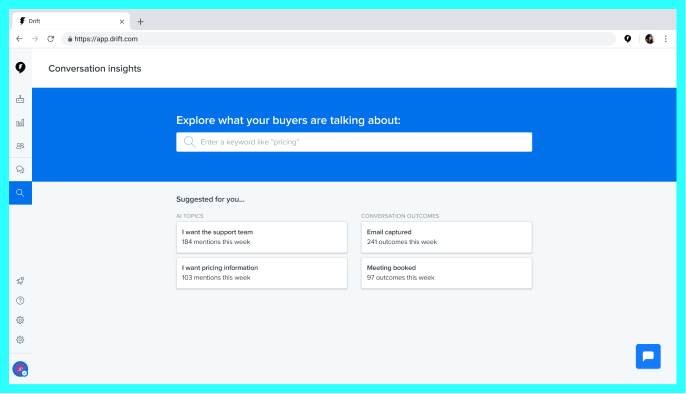
The Benefits of Conversational AI
With its ability to have natural and authentic conversations, Conversational AI offers plenty of benefits to both your business and your customers. We could go on about it for days — but for now, here are the benefits we think you need to know the most 👇
Create a Better Customer Experience
When you give customers a personalized, red carpet experience, you instantly stand out from the competition. That’s just a fact.
Conversational AI allows every customer to have that experience, every time they visit your website. Whether your sales team is online or not, the Conversational AI will be there to immediately answer questions, learn more about your prospect’s challenges, and provide relevant recommendations. And that ensures all your site visitors have a valuable experience that they won’t be forgetting anytime soon.
Increase Sales
Conversational AI isn’t just about providing quick and personalized responses in a single conversation. It also helps you nurture buyers through the sales cycle by equipping you to deliver even more relevant and valuable information in your next interaction. And when that happens, your buyers are more likely to make a purchase.
Not only that, but Conversational AI also drives your customers to interact more with your brand by recommending other content and offers, such as blogs, podcasts, and ebooks. With personalized recommendations, your buyers will be eager to book a meeting with a sales rep quicker than if they had to fill out a form and wait to hear back.
Generate More Qualified Leads
With old-school lead generation forms, the lead qualification process is often tedious and time-consuming. It requires you to talk with every lead personally to ensure they’re a good fit for your product. And that often means asking a checklist of questions, which do not make for a good conversation.
Now, with Conversational AI, it is possible to qualify leads conversationally and at scale, with minimal human intervention. AI chatbots can do most of the heavy lifting by qualifying your leads in real time, improving sales acceleration.
Increase Website Engagement with Personalization
There’s no better time to start a conversation than when a buyer is exploring your website. After all, that is when your business is at the top of your buyer’s mind.
With Conversational AI, you can catch site visitors at the moment of highest intent and reel them in with personalized conversations that acknowledge who the buyer is and where they are in the buying journey. And because your Conversational AI is available to everyone 24/7, you can ensure you are engaging buyers on their own terms — not 48 hours later when they may no longer be interested.
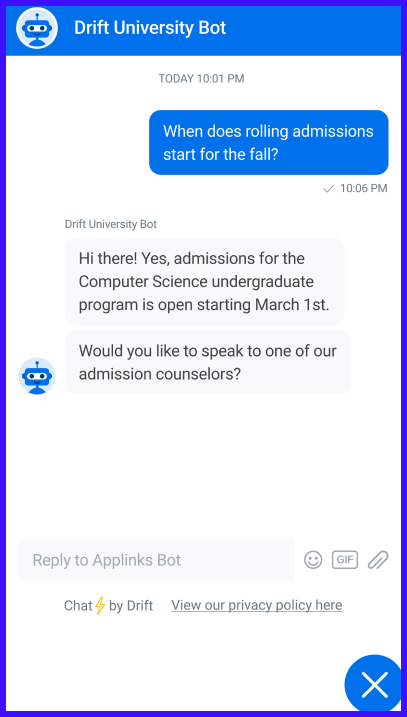
Gather Visitor Insights
Like with any normal conversation, Conversational AI allows you to get to know your buyers better — but at a much larger scale because you don’t have to rely on your human reps to have these interactions.
Through its conversations, the Conversational AI gathers information provided by the buyers first-hand, which you can then tap into to craft an even better buying experience. This includes allowing sales reps to personalize their conversations from the very first call, making your website more user-friendly, and creating content that reflects buyer interests or frequently asked questions.
The Challenges of Conversational AI
Since Conversational AI is still a pretty new concept to businesses, there’s a good chance you’ll run into some roadblocks along the way. For example, you might have issues if the Conversational AI is not fully integrated into your tech stack. Or you might need more advanced technology to further streamline the user experience.
Of course, no one wants to have to deal with these issues. That’s why, below, we’ve listed a few areas where you might encounter a few hiccups in the buying experience — and how you can avoid them.
Business Adoption
Without proper knowledge and team enablement, your organization might get the wrong impression that Conversational AI is an all-or-nothing solution, and that can hinder adoption. Make sure your stakeholders know that they can take a phased approach to Conversational AI — so they ease their way in, test it out, and limit it to certain web pages.
User Adoption
Even though chatbot software is becoming more prevalent on B2B web pages, new users may still find them intimidating or confusing. Because of this, it’s important to have easy-to-understand dialog that is accessible to all your site visitors.
In this vein, it’s also important to set up your Conversational AI so that, when a complicated question does come up, the chatbot knows to direct the customer to a human that can help. That fallback is the key to ensuring all your site visitors have a good experience.
Language Input
While Conversational AI is adept at understanding and responding to natural language, it’s generally less familiar with digital language such as emojis, acronyms, or slang. Therefore, Conversational AI may not be able to correctly respond to it. Sarcasm can also be hard for technology to detect, which can cause the AI to produce a confusing or unhelpful response.
This is why it’s important to train your Conversational AI chatbots so they can be equipped for a variety of situations, like responding to specific industry lingo. Drift’s Conversational AI base model is pre-trained on six billion conversations so that it can recognize and respond to some of the most common things users say in chat.
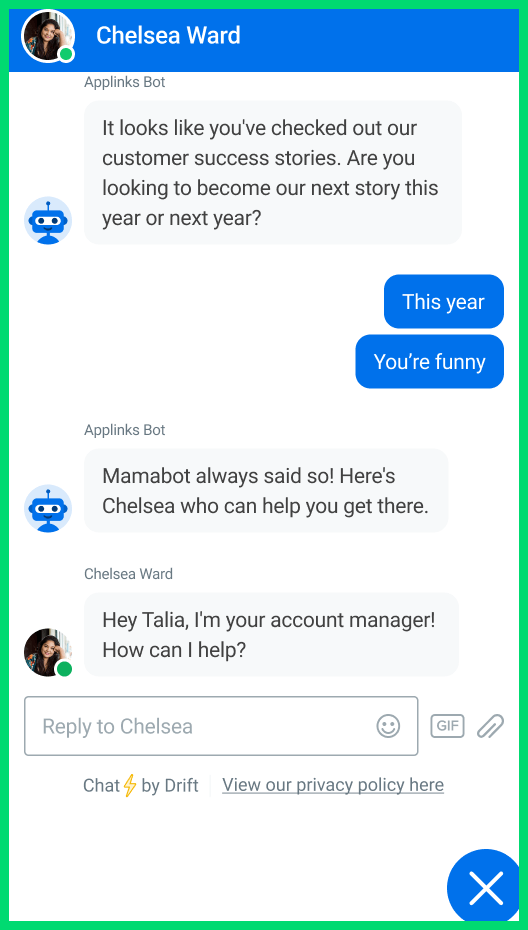
Accuracy of AI
Just like when we learn a new language, Conversational AI learns best from real-time interactions — and that means it takes time to improve. That’s why you can’t expect it to be perfectly accurate straight out of the box. Remember to take into account that, during training, the Conversational AI will have lower accuracy (i.e. a lower percentage of times that it provides the correct response). But with more conversations under its belt, you’ll see that number tick up soon enough.
You can also rely on solutions like Drift’s Conversational AI, which undergoes extensive training on B2B marketing and sales conversations, as well as topics specific to your business. Our Conversational AI takes a human-in-the-loop approach, so you have the opportunity to review the AI’s responses to ensure its accuracy. Not to mention that our AI is continually refining its training with more and more conversations every day — which means it’s always improving.
Additionally, our generative AI feature, AI Topic Example Generation, suggests different variations of the same question for your AI to learn so that you can boost your response accuracy without taking extra time out of your schedule to train the AI.
What Are Some Conversational AI Use Cases?
We’ve mentioned how buyers and customers are getting used to the variety of Conversational AI solutions across the internet. But just what are some of the use cases that you might encounter?
Well, aside from being a question and answer machine, Conversational AI can help your business function better in areas such as:
- Making the company and brand more accessible: Use Conversational AI to power your support system to decrease friction and give customers a seamless experience — whether it’s allowing site visitors to use text-to-speech or being available 24/7 to answer questions.
- Optimizing customer conversations: A VIP account looking to learn more about your product and a customer in need of support deserve different site experiences. With Conversational AI, you can qualify your visitors so you can deliver personalized experiences to target accounts, deflect support inquiries, and engage with people who are unqualified or not yet ready to buy. After all, higher engagement means happier customers.
- Making information easier to find for your customers: By using Conversational AI, your site visitors can immediately get the information they need without having to wait for a human to enter the chat. And whether the site visitor picks a suggested FAQ question or types in a question free-hand, the Conversational AI can determine which next step is best for the visitor based on their input.
- Enriching your team’s learning experiences: Whether you’re providing HR resources or employee training, use Conversational AI to streamline internal processes and make learning way more on brand — and accessible — for your team.
Implementing Conversational AI
To wrap things up, let’s briefly highlight some of the key points we covered today:
👉 We defined what Conversational AI is and how it works, as well as the various benefits it can offer for your business.
👉 We explained how AI chatbots leverage Conversational AI when communicating with customers and how it streamlines processes for your team.
👉 We also mentioned some of the challenges a business might face when adopting Conversational AI and how to avoid them.
But if there’s one main takeaway, it’s that, in today’s always-on world, Conversational AI is essential for understanding your site visitors’ interests and problems, so that you can provide the right solution at the right time.
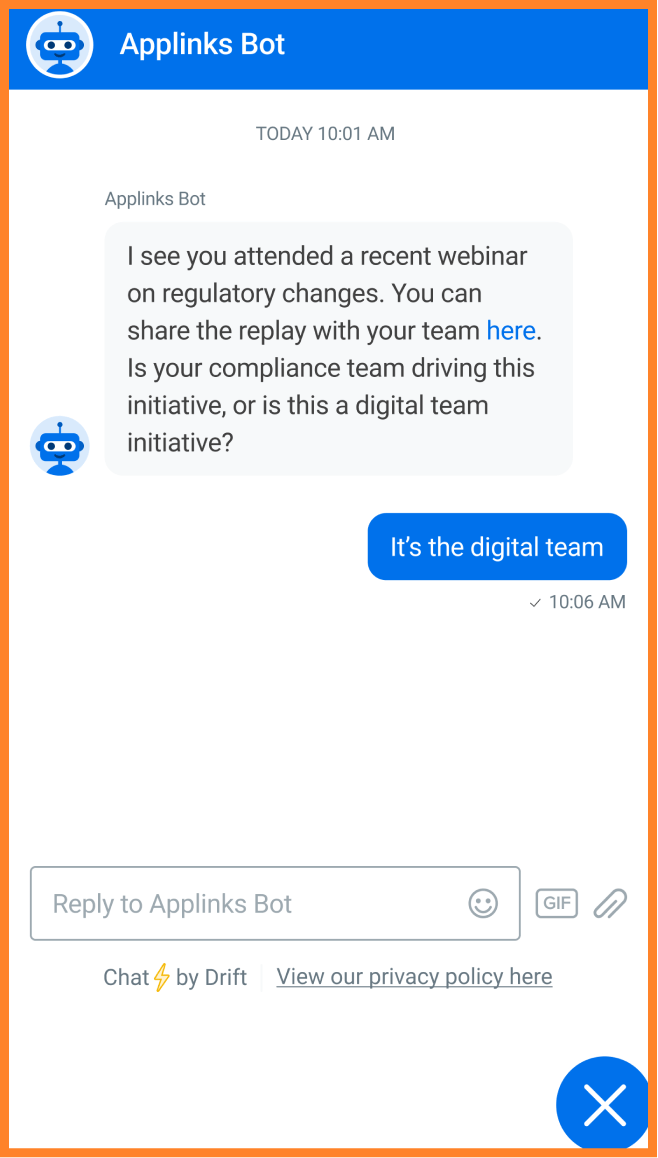
We can all agree that your customers deserve the best — and leveraging the latest technology to improve your marketing, sales, or customer experience will reap massive returns (think a 670% return on investment). And by giving your buyers a brand experience that not only meets but also exceeds their expectations, you can turn your buyers from mere users into raving fans.
Luckily, with Drift’s Conversational AI platform, you can deliver that tailored, frictionless experience to everyone, which will delight both your customers and your team. Through real-time, humanlike conversations at scale, our Conversational AI will help you engage and qualify buyers on your website, automatically deliver personalized experiences that convert, and empower customers to resolve issues on their own — all while collecting valuable conversational insights.
Additionally, our GPT integration makes use of AI’s generative capabilities to further improve your conversations with customers, such as suggesting replies in live chat and providing automatic translations. With Drift’s Conversational AI, you can finally prioritize and personalize all your marketing, sales, and service efforts without having to compromise on an authentic and human experience.
